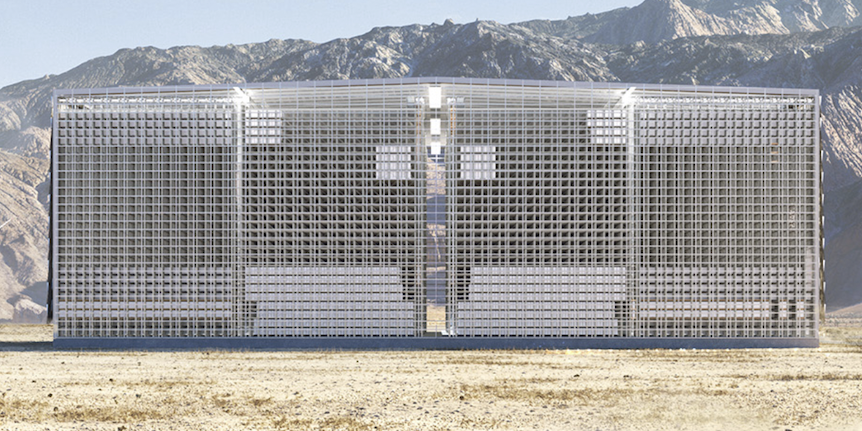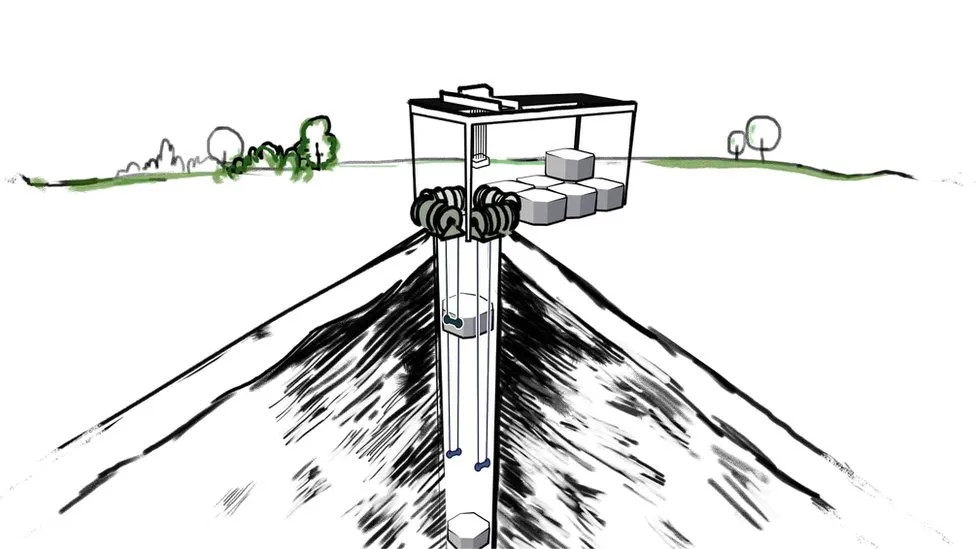Introduction
The world today faces a critical need for clean and sustainable energy sources. Fossil fuels, which have been the mainstay of our energy production for decades, are not only finite but also emit greenhouse gases, contributing to climate change. The search for alternative energy sources has led to the development of various forms of renewable energy, including wind, solar, and hydroelectric power. However, renewable energy has a major limitation - it is intermittent and not always available when needed. Energy storage systems, therefore, play a critical role in ensuring a consistent and reliable supply of energy. One such energy storage system is the gravity battery.
Gravity batteries are a type of energy storage system that utilizes the potential energy of elevated weights to store and generate electricity. The system consists of a set of weights that are lifted to a certain height, and then allowed to fall, generating electricity in the process. This form of energy storage has several potential advantages over other forms of energy storage, such as batteries.
Advantages of Gravity Batteries
One of the key advantages of gravity batteries is their ability to provide long-term energy storage without the need for expensive or environmentally harmful batteries. Gravity batteries are designed to last for decades and require little maintenance, making them an attractive option for applications that require long-term energy storage.
Another advantage of gravity batteries is scalability. They can be scaled up for large-scale grid applications, or scaled down for use in homes and businesses. This versatility makes them a potentially useful solution for a wide range of energy storage needs.
Finally, gravity batteries have the potential to play a key role in the transition to a more sustainable energy future. By providing a reliable and consistent source of energy storage, they can help to support the growth of renewable energy generation systems such as wind and solar power.
Approaches to Building a Gravity Battery
There are several approaches to building a gravity battery. One approach is to use a system of pulleys and weights. In this system, weights are lifted to a certain height using a pulley system and allowed to fall, generating electricity in the process.
Another approach is to use a hydraulic system using water. In this system, water is used to lift and lower weights, similar to a hydraulic system. The weight is lifted by pumping water into a cylinder and then allowed to fall by releasing the water from the cylinder.
There are also other potential approaches to building a gravity battery, such as using compressed air to lift and lower weights.
Challenges and Limitations of Gravity Batteries
Despite their potential advantages, gravity batteries also face several challenges and limitations. One major challenge is efficiency. Gravity batteries require energy to lift weights, which can reduce the overall efficiency of the system. Additionally, the generator used to convert the falling weight's potential energy into electricity may not be very efficient, further reducing the system's overall efficiency.
Another challenge is the cost of building and maintaining gravity battery infrastructure. While the long lifespan of gravity batteries makes them cost-effective in the long term, the initial investment required can be significant.
Finally, there are other challenges that need to be addressed, such as the potential environmental impact of gravity battery infrastructure, as well as the need for proper safety protocols to ensure the safe operation of the system.
Research and Development of Gravity Batteries
Despite these challenges, there have been several experimental gravity battery projects undertaken, some of which have shown promising results. For example, Gravity Power LLC developed the Gravity Power Module (GPM), which is a closed-loop system that uses water to lift and lower weights. The GPM has the potential to store large amounts of energy and could be used to provide backup power for grid-scale applications.
Another experimental gravity battery is the Energy Vault system, which uses concrete blocks to store energy. The blocks are lifted using a crane system and then released to generate electricity. The Energy Vault system has the potential to provide energy storage for large-scale renewable energy generation systems.
Research is ongoing to improve the efficiency and scalability of gravity battery technology. For example, researchers are exploring the use of advanced materials and designs to reduce the energy required to lift weights, as well as to improve the efficiency of the generator.
Future Potential of Gravity Batteries
The potential applications of gravity batteries are numerous. They could be used to provide backup power for grid-scale applications, ensuring a reliable and consistent supply of energy. They could also be used to store energy for off-grid communities, helping to bring sustainable and affordable energy to remote areas.
Gravity batteries could also play a role in supporting renewable energy generation systems. By providing reliable and consistent energy storage, they could help to improve the stability and reliability of the grid, making it easier to integrate large amounts of renewable energy into the system.
Conclusion
In conclusion, gravity batteries represent a promising new frontier in energy storage technology. While there are challenges and limitations to be addressed, the potential benefits of gravity batteries are significant. Continued research and development will likely lead to an increasingly important role in the transition to a more sustainable and resilient energy system. By providing long-term energy storage, scalability, and potential applications in a wide range of contexts, gravity batteries offer a promising solution to the challenges of energy storage in a world that is increasingly focused on sustainability and renewable energy.





0 comments:
Post a Comment